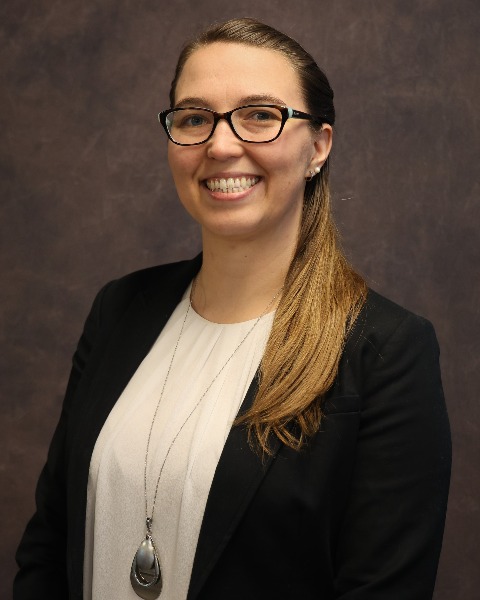Anatomy Education Posters
Poster: Anatomy Education Posters
103 - Visuospatial Ability, Psychomotor Ability, and Educational Outcomes of Ultrasound Training in Conjunction with Medical Gross Anatomy: A Randomized Controlled Trial in First Year Osteopathic Medical Students
Sunday, March 24, 2024
5:00pm - 7:00pm US EDT
Location: Sheraton Hall
Poster Board Number: 103
There are separate poster presentation times for odd and even posters.
Odd poster #s – first hour
Even poster #s – second hour
Co-authors:
There are separate poster presentation times for odd and even posters.
Odd poster #s – first hour
Even poster #s – second hour
Co-authors:
Jeffrey Chesnut - Professor, Department of Clinical Medicine, Lincoln Memorial University- DeBusk College of Medicine; Adam Kolatorowicz, PhD - Associate Professor, Department of Anatomy, Lincoln Memorial University- DeBusk College of Medicine; Anthony Harper, PhD - Assistant Professor, Department of Anatomy, Lincoln Memorial University- DeBusk College of Medicine

Cory A. Buenting Gritton, M.S.
Doctoral Candidate
Lincoln Memorial University- DeBusk College of Medicine
Knoxville, Tennessee, United States
Presenting Author(s)
Abstract Body : With the prevalence of Point-of-Care Ultrasound (US) in various clinical settings, implementation of ultrasound (US) training in undergraduate medical education, including within gross anatomy coursework, continues to be seen. Both clinical US and anatomy have been researched in relation to visuospatial ability, however, the relationship between anatomy knowledge, visuospatial ability, and US knowledge have not been thoroughly explored. The study objective was to evaluate hands-on anatomy centered ultrasound (HOACUS) training of first year osteopathic medical students (OMS-I) based on anatomy knowledge, US knowledge, visuospatial ability, and psychomotor ability.
OMS-I students were recruited in the first semester for this IRB exempt study. Participants completed three initial assessments: 1) a 15-item MCQ quiz with five non-spatial US items, five non-spatial anatomy items, and five items combining US, anatomy, and spatial knowledge; 2) a Mental Rotation Test (MRT), and 3) a Purdue Pegboard Test (PPBT). Participants were randomized into experimental or control groups. The experimental group received an introduction to US session and three HOACUS sessions scheduled alongside the Medical Gross Anatomy (MGA) course, while the control group did not receive supplemental training during MGA. At MGA course conclusion, both groups completed three final assessments. Statistical analysis included a MANCOVA with linear model post-hoc tests.
A total of 108 participants completed the study (control group n=47; experimental group n=61). MANCOVA results indicated treatment group was a significant predictor, as were the covariates of initial non-spatial US, initial MRT, and initial PPBT. With Bonferroni adjustment, post hoc results indicated final non-spatial US score was predicted by group (p< 0.0001), final MRT was predicted by both initial non-spatial US (p=0.0043) and initial MRT (p< 0.0001), and final PPBT was predicted by initial PPBT (p< 0.0001). Results indicate experimental treatment promotes a higher final non-spatial US score (2.56 points effect size, compared to 1.70 points in the control group). Initial non-spatial US score and initial MRT score were correlated with final MRT score (p< 0.0001). Initial PPBT and final PPBT were correlated (p< 0.0001) and indicated consistency of PPBT over time.
This randomized controlled trial of 5-hours of HOACUS as supplement to MGA showed increased US knowledge but did not demonstrate greater levels of anatomy knowledge, visuospatial ability, or psychomotor ability.
While HOACUS during MGA may not enhance visuospatial or psychomotor skill in this limited sample, it did lead to improved US knowledge and may still provide other described benefits such as active learning in gross anatomy and early clinical skill development.
OMS-I students were recruited in the first semester for this IRB exempt study. Participants completed three initial assessments: 1) a 15-item MCQ quiz with five non-spatial US items, five non-spatial anatomy items, and five items combining US, anatomy, and spatial knowledge; 2) a Mental Rotation Test (MRT), and 3) a Purdue Pegboard Test (PPBT). Participants were randomized into experimental or control groups. The experimental group received an introduction to US session and three HOACUS sessions scheduled alongside the Medical Gross Anatomy (MGA) course, while the control group did not receive supplemental training during MGA. At MGA course conclusion, both groups completed three final assessments. Statistical analysis included a MANCOVA with linear model post-hoc tests.
A total of 108 participants completed the study (control group n=47; experimental group n=61). MANCOVA results indicated treatment group was a significant predictor, as were the covariates of initial non-spatial US, initial MRT, and initial PPBT. With Bonferroni adjustment, post hoc results indicated final non-spatial US score was predicted by group (p< 0.0001), final MRT was predicted by both initial non-spatial US (p=0.0043) and initial MRT (p< 0.0001), and final PPBT was predicted by initial PPBT (p< 0.0001). Results indicate experimental treatment promotes a higher final non-spatial US score (2.56 points effect size, compared to 1.70 points in the control group). Initial non-spatial US score and initial MRT score were correlated with final MRT score (p< 0.0001). Initial PPBT and final PPBT were correlated (p< 0.0001) and indicated consistency of PPBT over time.
This randomized controlled trial of 5-hours of HOACUS as supplement to MGA showed increased US knowledge but did not demonstrate greater levels of anatomy knowledge, visuospatial ability, or psychomotor ability.
While HOACUS during MGA may not enhance visuospatial or psychomotor skill in this limited sample, it did lead to improved US knowledge and may still provide other described benefits such as active learning in gross anatomy and early clinical skill development.

